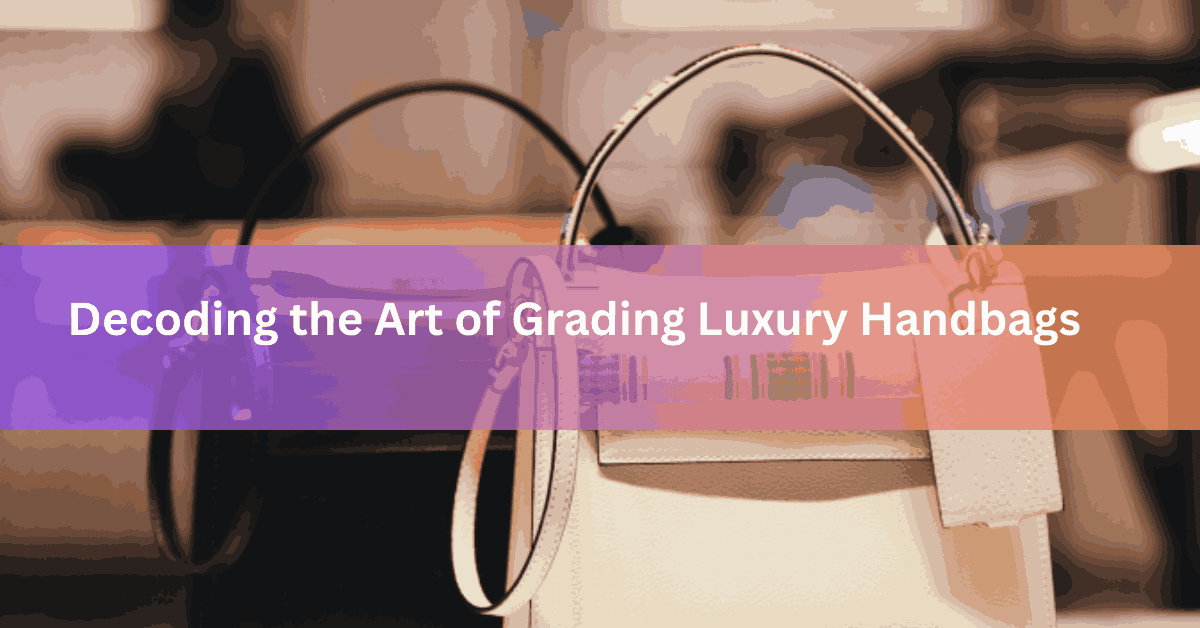Decoding the Art of Grading Luxury Handbags: A Comprehensive Guide
Introduction:
The allure of luxury handbags extends far beyond their functional purpose, transcending into a realm where craftsmanship, prestige, and exclusivity converge. Within this realm, the grading of luxury handbags emerges as a meticulous process that goes beyond a mere assessment of aesthetics. In this article, we delve into the intricate world of grading luxury handbags, exploring the key elements that contribute to their overall evaluation.
I. Material Mastery
At the heart of luxury handbag grading lies the examination of materials. The quality and type of material used not only dictate the bag’s durability but also play a pivotal role in determining its grade. Whether crafted from sumptuous leather, exotic skins, or high-quality textiles, the material sets the foundation for the handbag’s intrinsic value. Graders scrutinize the texture, consistency, and overall feel, ensuring that it aligns with the brand’s commitment to excellence.
II. Craftsmanship Chronicles
Craftsmanship stands as a testament to the artisanal skill embedded in luxury handbags. The grading process meticulously evaluates the precision of stitching, alignment of patterns, and the expert application of hardware. A symphony of details, from meticulously hand-painted edges to flawlessly executed seams, contributes to a higher grade. Craftsmanship not only ensures the bag’s longevity but also elevates it to a wearable piece of art.
III. The Authenticity Quest
In the realm of luxury, authenticity reigns supreme. Graders embark on a quest to authenticate every element, scrutinizing logos, holograms, and serial numbers. The presence of brand-specific markers ensures that the handbag is a genuine product, safeguarding buyers from counterfeits. Authentication is a meticulous process, often involving comparison with brand archives and databases to confirm the bag’s legitimacy.
IV. Condition Chronicles
The condition of a luxury handbag is a critical factor in its grading. Graders meticulously inspect for signs of wear, scrutinize the absence of stains or scratches, and examine the preservation of interiors. A well-maintained handbag, with minimal indications of previous use, contributes positively to its grade. The grading process aims to provide consumers with an accurate depiction of the bag’s current state, fostering transparency in the luxury market.
V. Hardware and Accessories
Every element, from zippers to clasps, undergoes careful examination during the grading process. The quality and condition of hardware contribute significantly to the overall grade. Additionally, the inclusion of original accessories, such as dust bags, authenticity cards, and care booklets, enhances the handbag’s value. These accessories not only serve a practical purpose but also add an extra layer of authenticity to the graded luxury handbag.
VI. Design Dynamics
Aesthetic appeal and adherence to the brand’s design philosophy play a pivotal role in the grading process. Graders assess the timeless nature of the design, the intricacy of details, and the overall visual impact. Limited editions or designs that stand the test of time often receive higher grades, reflecting their enduring appeal in the dynamic world of luxury fashion.
VII. Market Influences
The grading of luxury handbags is not conducted in isolation; it is influenced by market dynamics. The current demand for specific brands, styles, or even rarity can impact grading. Handbags from sought-after collections or those with limited availability may receive higher grades due to their desirability in the market.
VIII. Size and Functionality
Practicality meets luxury as graders evaluate the size and functionality of handbags in relation to their intended purpose. A well-designed handbag that seamlessly integrates style with functionality receives positive marks. Whether it’s a spacious tote or a compact clutch, graders consider how well the size and features align with the needs and preferences of discerning consumers.
IX. Rarity and Collectibility
Rarity adds another layer to the grading process. Limited edition or discontinued models often garner higher grades due to their exclusivity and appeal to collectors. The scarcity of certain designs enhances their desirability, making them coveted pieces within the luxury handbag market.
X. Documentation Decoded
Original documentation, including receipts, certificates of authenticity, and product care information, can significantly impact a luxury handbag’s grade. The presence of such documentation not only adds an extra layer of assurance regarding the bag’s authenticity but also enhances its perceived value in the eyes of potential buyers.
Conclusion:
Grading luxury handbag is a nuanced process that combines artistry, authentication, and market dynamics. From the touch of premium materials to the rarity of limited editions, each element contributes to the overall assessment of a handbag’s quality and value. As consumers continue to navigate the world of luxury fashion, understanding the intricacies of grading empowers them to make informed decisions and invest in timeless pieces that transcend mere accessories, becoming symbols of style and sophistication.



